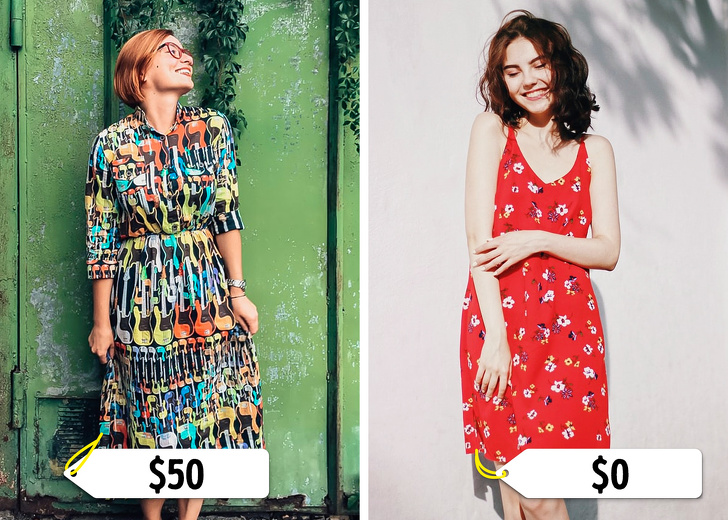People have started to buy fewer clothes within the past 7 years. This has led to a situation where the profits of large companies have fallen by 50%, tens of thousands of stores have been closed, and some have even declared themselves bankrupt. Buyers prefer to spend more money on food and cosmetics, than clothes. After all, who needs a pile of similar jeans and white shirts?
The Elite Indian tried to figure out why more and more people are refusing to buy clothes in mass-market shops. And what alternatives there are to these giant brands.
Mass character

Zara alone produces about 450 million clothing items per year and creates about 40,000 new models. Their total sales worldwide are about 80 billion items.
In today’s world, where people are judged by the way they look, it’s important to be able to stand out in the crowd. Mary Ruppert-Stroescu, an associate professor of fashion design at Washington University in St. Louis, claims that a huge amount of clothing destroys individuality, “So you kind of don’t really think too much about what you’re wearing, why you’re wearing it, what you’re going to do with it when you’re finished liking it, or how you would combine it with other things in your wardrobe.”
Over manufacturing

The mass consumption of clothes gave birth to the problem of over manufacturing. Greenpeace conducted a study and found that 110,000 tons of textiles are sent to landfills annually in Hong Kong alone. It will take no less than 200 years to utilize them from dumps. Many of these clothes consist of artificial fibers that will not decompose for more than 100 years or that will turn into microplastics.
Dubious quality

In order to make goods more available and reduce prices, manufacturers use low-quality fabrics and accessories that are bad quality. Clothes stretch faster, get covered with tiny threads, the zippers get broken, and the buttons get torn off. This happens because the development of the market of “quick fashion” and quick-changing trends made people stop perceiving clothes as something valuable. In fact, clothes became disposable items.
Some people claim that they make more purchases due to the low prices or poor quality. But later, when looking at their piles of clothes, they feel dissatisfaction.
Low pay

© Sean Robertson / commons.wikimedia
The collapse of the Rana Plaza complex in Bangladesh.
Another way to reduce clothing costs is to cheapen the manufacturing process. Sewing factories are located in countries where people are paid low-wages. Basically, those are China, India, Cambodia, and Bangladesh. Workers get about $3 per day and live in warehouses. Many big companies are not direct owners of these factories, which means they don’t bear any responsibility for what’s happening inside.
On the 24th of April, 2014 the Rana Plaza complex, where several tailoring factories were located, collapsed in Bangladesh. Workers had been complaining often about the cracks in the walls, but the authorities didn’t pay attention to them. As a result of the accident, 2,500 people were injured and more than 1,000 died.
Small size range

© TOLGA AKMEN / AFP / East News
When producing clothes for the mass-market, companies don’t always have an opportunity to check the templates and correct their mistakes. Moreover, workers themselves have no interest in making clothes to match certain parameters.
The target audience of mass-market clothing consumers are women who wear a S and M. It’s these women who manufacturers are focused on. You will rarely find items in extra-large or extra- small sizes in stores, however, some brands create separate collections for these people. Also, manufacturers don’t take into account other parameters.
The average height of a European woman is 5′ 5″. If your height is taller or shorter, be ready to allot a significant amount of money to the seamstress who will redo the clothing according to your body shape.
The pursuit of strange trends

After the well-known fashion houses have shown their collections at fashion weeks, mass-market brands copy their designs and put out clothing for sale. But clothes on the runway and clothes in real life look different. Transparent bags, shoes, and ponchos that were popular several seasons ago looked great on runway models, but not in a noisy and dusty metropolis.
In pursuit of strange trends, companies forget that they need to manufacture something that a buyer will be able to put on right after paying for their purchase and walk out of the store. As a result, there are a lot of clothes being sold, but the choices are limited.
What alternatives do we have?

© Oleg Ivanov / unsplash
- Individual tailoring. Make a list of the necessary clothes you need for work and play, and find a good seamstress. It’s not necessary to order an entire wardrobe — you can make do with just a few items. For example, a pant suit, an evening dress, an official skirt, and a shirt. These things will cost more, but will fit you perfectly and will serve you for many years.
- Swap-parties. This is an event where people meet each other, communicate in a pleasant atmosphere, and swap clothes. You can bring your clothes to one of these parties (of course, without holes, stains, and scuffs). Even if you don’t like the clothes the other people are offering, you’ll be able to free some space in your closet.
- Second-hand shops. The sales in second-hand shops have grown 2 times within the past 10 years. The main consumers are women aged 25-37 who want to look beautiful and be sensible buyers. Oftentimes, one can find original brand name clothing here and even clothes that still have the tags.
- Clothes from local designers. If you don’t want to support giant brands, pay attention to the clothes produced by young designers in your hometown. It will help you support their endeavors financially and renew your wardrobe. As a rule, these clothes are produced in small batches and their quality is thoroughly checked.
Where do you prefer to buy clothes? What secrets of looking for the perfect dress do you have?
Preview photo credit Whenyouwishuponastarfish / imgur









